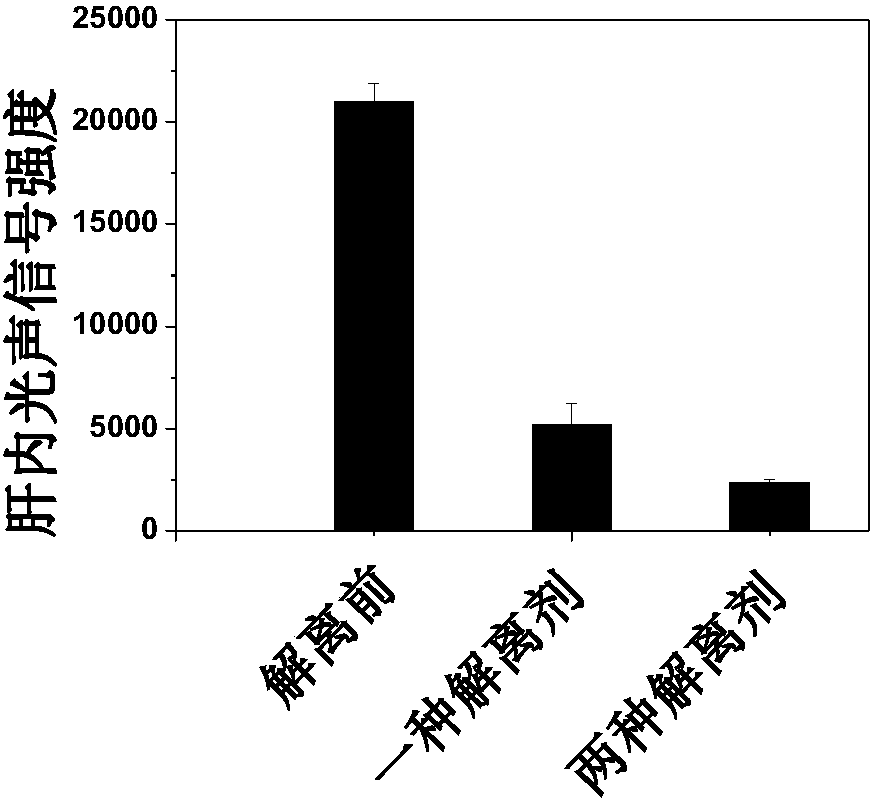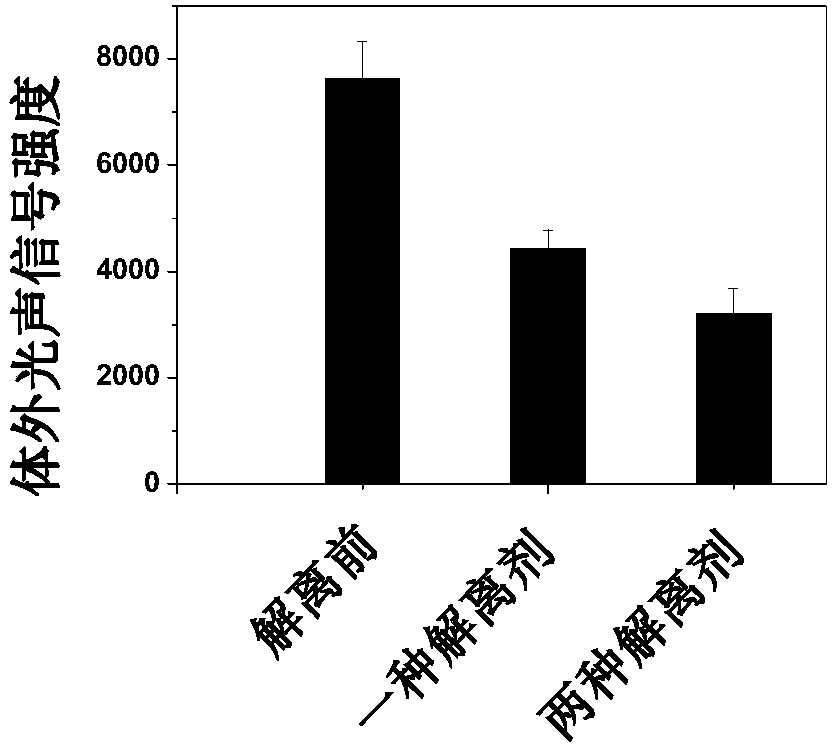Method for dissociating iron coordination polymer nanoparticles and application thereof
A technology of coordination polymers and nanoparticles, applied in the field of biomedical new materials, can solve the problems of poor tumor accumulation and retention, affect the treatment effect, and do not have the EPR effect, and achieve the effect of reducing potential damage
- Summary
- Abstract
- Description
- Claims
- Application Information
AI Technical Summary
Problems solved by technology
Method used
Image
Examples
preparation example Construction
[0053] The invention provides a method for preparing iron coordination polymer nanoparticles, comprising:
[0054] Coordinating high molecular polymers, ferric salts and polyphenols to obtain coordination polymer nanoparticles.
[0055] The preparation method of the iron coordination polymer nanoparticles of the present invention is to react and coordinate the high molecular polymer, ferric salt and polyphenol to obtain the coordination polymer nanoparticles; preferably specifically:
[0056] The high molecular polymer and the ferric salt are mixed and stirred, then polyphenol is added, stirred, centrifuged, and ultrasonically dispersed to obtain polymer nanoparticles.
[0057] Firstly, a high molecular polymer is provided or prepared, which has been clearly described above, and will not be repeated here.
[0058] In the invention, firstly, the high molecular polymer and the ferric salt are mixed and stirred. Preferably, the polyethylene glycol-modified polyglutamic acid is ...
Embodiment 1~16
[0091] The molecular weights of polyethylene glycol and polyglutamic acid were respectively selected to be 5000Da and 21600Da, and the molar ratio was 5:1. Dissolve polyethylene glycol-modified polyglutamic acid in water, add ferric chloride solution, mix and stir for 4 hours, and slowly add polyphenol dropwise under rapid stirring at a rate of 0.5mL / min, and add polyphenol The final mixing and stirring time is 12h. Centrifuge after the mixing and stirring, the centrifugal speed is selected as 8000rpm, and the centrifugal time is selected as 10min. After ultrasonic dispersion, coordination polymer nanoparticles were prepared. The types and amounts of polyethylene glycol, polyglutamic acid, ferric chloride, and polyphenols are shown in Table 1.
[0092] The consumption of table 1 embodiment 1~16 different raw materials
[0093]
[0094] The coordination polymer nanoparticles prepared in Example 6 were analyzed, and the results showed that the average size of the iron coor...
Embodiment 17~29
[0096] 1.2 mL of iron coordination polymer nanoparticles with a concentration of 2 mg / mL were added with different volumes of deferoxamine with a concentration of 50 mg / mL, and stirred for a certain period of time. Watch its color change and track its UV and particle size changes. Wherein, the concentration and stirring time of adding deferoxamine are as follows:
[0097] Table 2 embodiment 17~29 adds the concentration and stirring time of ferric amine
[0098]
[0099] The color change of iron coordination polymer nanoparticles before and after dissociation in Example 25 is as follows: figure 1 . The results showed that with the increase of the volume of deferoxamine, the iron coordination polymer nanoparticles gradually became lighter from the original black color, and the color gradually changed to brownish yellow as time went on. Among them, the ultraviolet changes before and after the dissociation were further detected, and the results showed that the ultraviolet ab...
PUM
| Property | Measurement | Unit |
|---|---|---|
| Molecular weight | aaaaa | aaaaa |
Abstract
Description
Claims
Application Information
 Login to View More
Login to View More - R&D
- Intellectual Property
- Life Sciences
- Materials
- Tech Scout
- Unparalleled Data Quality
- Higher Quality Content
- 60% Fewer Hallucinations
Browse by: Latest US Patents, China's latest patents, Technical Efficacy Thesaurus, Application Domain, Technology Topic, Popular Technical Reports.
© 2025 PatSnap. All rights reserved.Legal|Privacy policy|Modern Slavery Act Transparency Statement|Sitemap|About US| Contact US: help@patsnap.com



